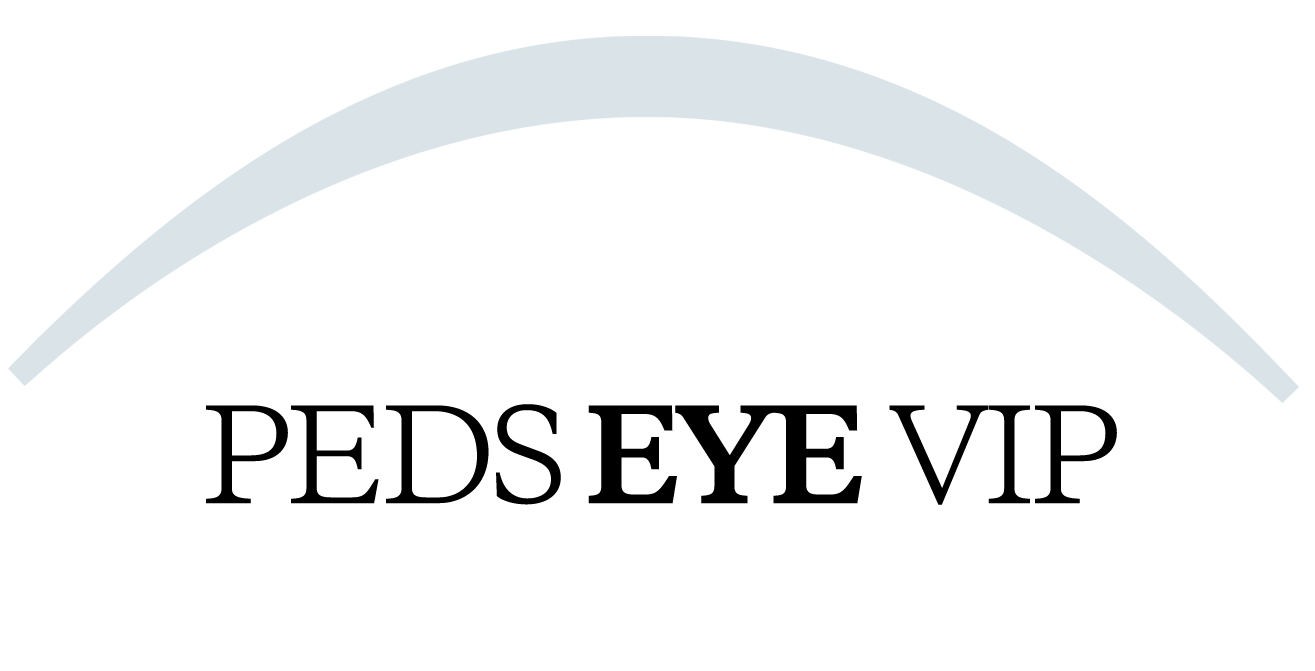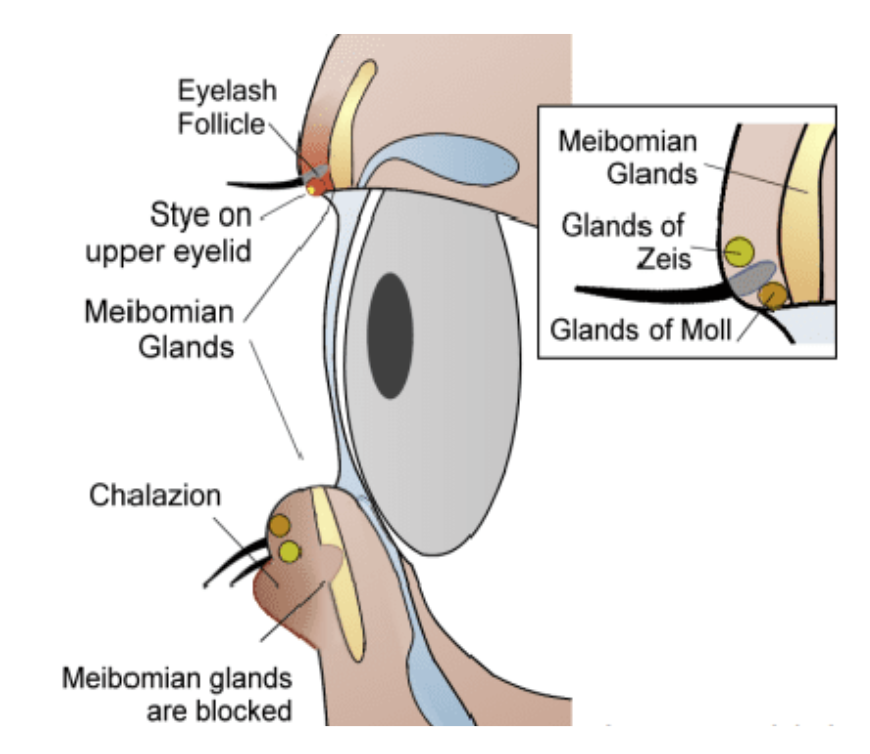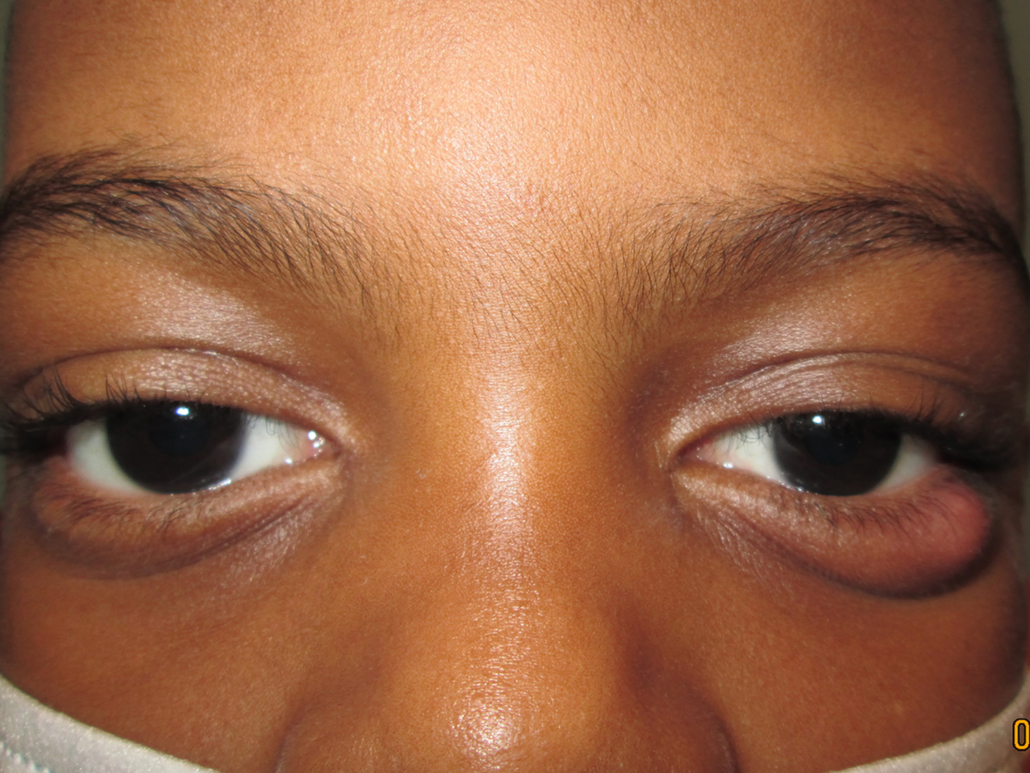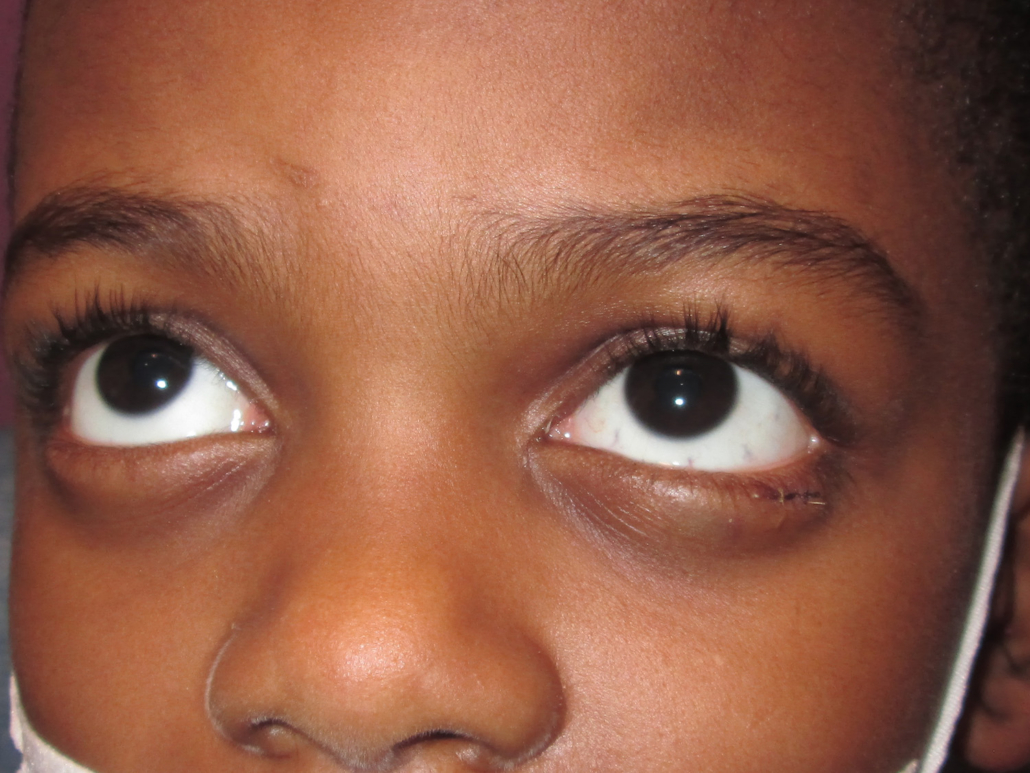Even if hot compresses don’t help much, these lesions often resolve on their own over time (months to years). There is no danger to the eye or vision, so leaving it alone is a perfectly reasonable option.
However, if the chalazion is causing distress to you or your child there are other options. For emotionally mature children (usually older than 9 years) who have had a chalazion or hordeolum for less than 2 months, we can inject steroid directly into the eyelid in the office. Steroid injection is safe and usually effective, but there is no guarantee it will work (or work totally). The greatest risk of this (though unlikely to occur) is depigmentation (a white spot) in the skin from the medication. While this doesn’t happen often, there are rare instances of permanent discoloration. This is more of a problem for darker-skinned people, as the contrast is greater. We can also drain these lesions surgically. Surgery for younger children (and many teens) involves a visit to the operating room and general anesthesia for a few minutes. While the child is asleep, we make a small in the lid and drain the oil and inflammatory debris. Whenever possible, the incision is made on the undersurface of the lid. Sometimes, the eyelid skin is thinned out from the
lesion and disintegrates during surgery; this usually heals well on its own but sometimes a stitch is needed. There are usually no complications but every surgery has potential risks. The risks of this surgery are infection, recurrence of the chalazion (or stye), leaving behind some of the chalazion wall, and minor bleeding. There is also the risk of the steroid leaving a small white mark (as with the office option). The likelihood of vision loss is near zero, but any surgery on or near the eye carries this risk.





